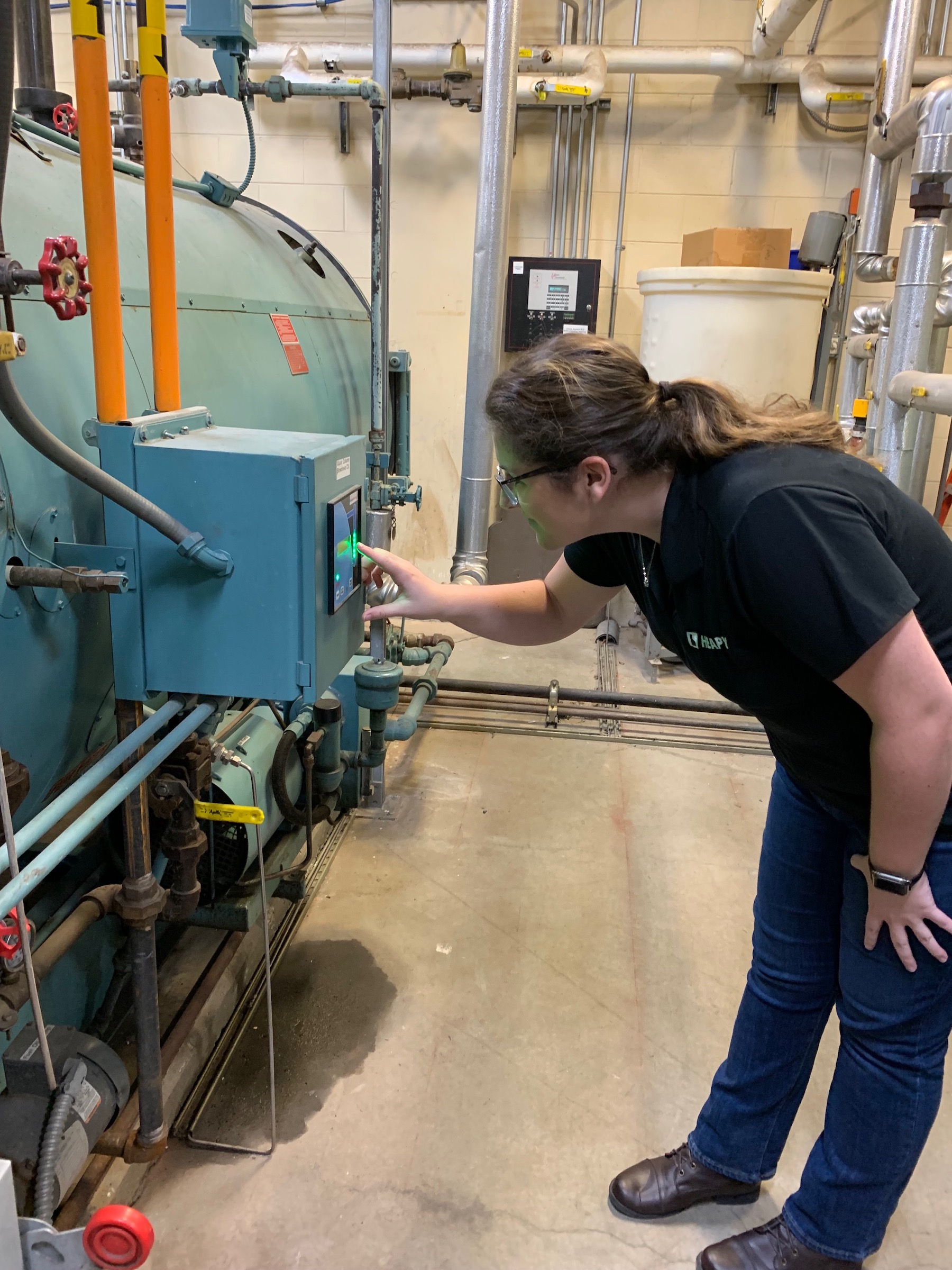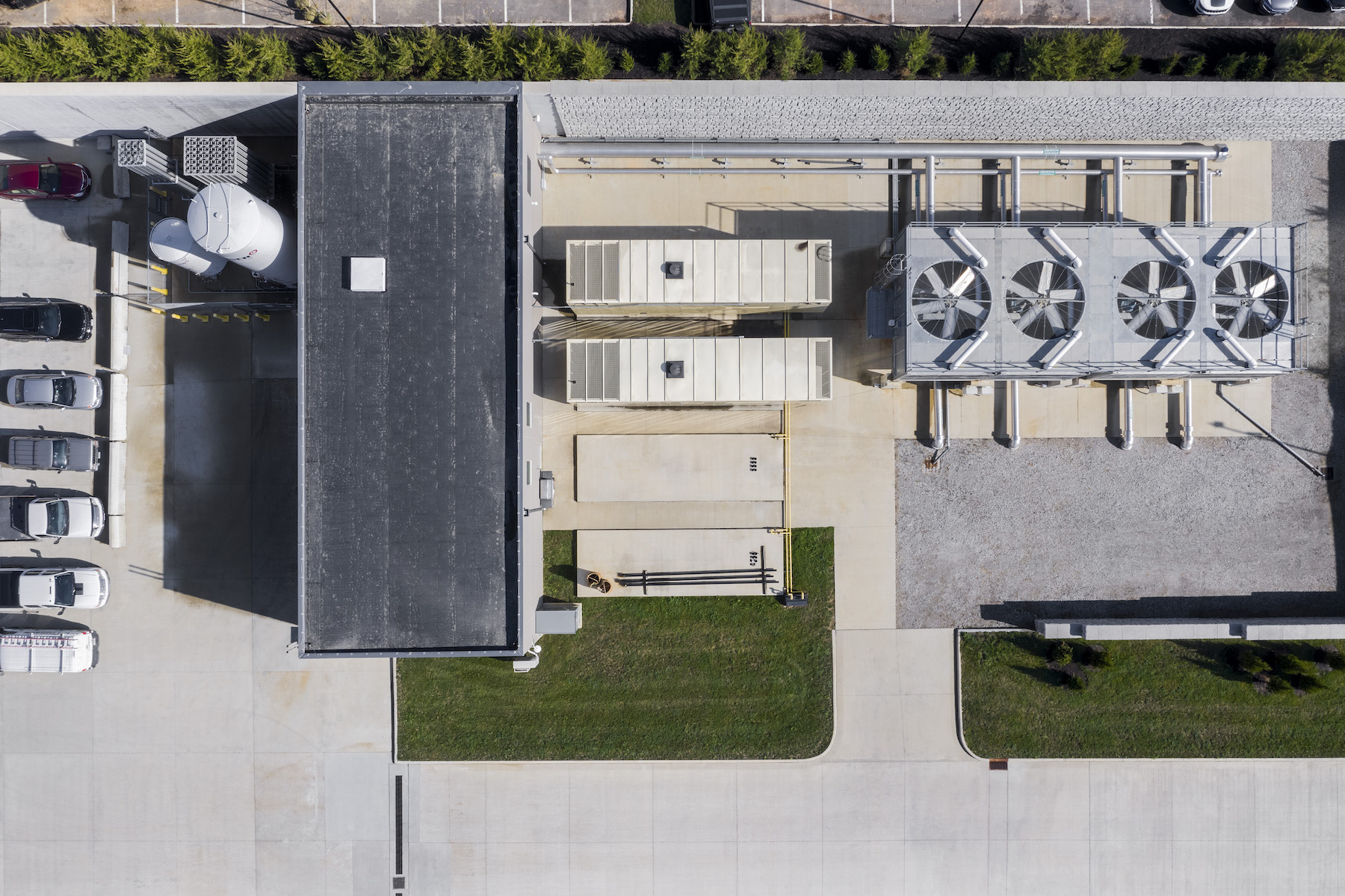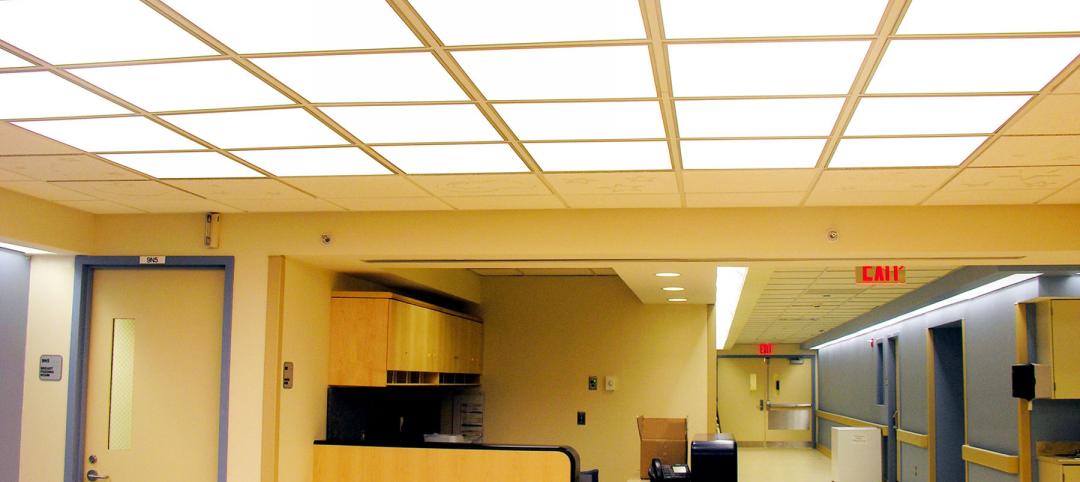When your HVAC system was new, it was designed to keep the indoor environment comfortable, functional, and safe. Over time, that system can drift out of alignment, leading to wasted resources, excessive energy consumption, and reduced occupant comfort.
Heating, ventilation, and air conditioning accounts for approximately 40% of the energy usage in an average commercial building, making it vital to conduct regular maintenance and keep these systems running efficiently.
To keep your building systems operating at peak performance, let’s examine the five most commonplace HVAC problems and potential solutions.
1. Incorrect Building Pressurization
When building pressurization is out of whack, you may notice doors slamming or hanging open, hot or cold spots, excessive humidity, or contamination of indoor spaces by outside debris such as dirt or leaves.
Most facilities need to maintain a slightly positive indoor air pressure, where more air is being taken into the building than taken out. If your building is not pressurized correctly, your HVAC system works harder to maintain heating and cooling, wasting energy and running up your utility bill.
To fix pressure issues, check for failed sensors, ensure proper sensor calibration, verify that outside air dampers and exhaust fans are not in override settings, and inspect duct work for leaks or damage.

2. Inadequate Use of Setbacks
Most facility managers are familiar with using sensors or scheduled setbacks to turn lights and equipment off when a space is not in use, but the same approach can be taken with HVAC to save you money by reducing system run time when the building is unoccupied.
When a space is unoccupied, your HVAC system should operate at reduced heating (winter) and cooling (summer) requirements. The system can then be scheduled to return to occupancy setpoints before people enter the building, ensuring the indoor environment is an appropriate temperature when occupied. These more relaxed setpoints allow for higher energy efficiency year-round.
Check your building and equipment design documents as a starting point for unoccupied versus occupied settings, then adjust through trial and error until you have the right settings.
3. Forgotten Overrides
When building occupants complain about being hot or cold, facility and maintenance staff sometimes input overrides into the HVAC system to temporarily resolve the issue. While this might fix the immediate problem, it might prevent your team from identifying and correcting the underlying issue that led to the complaint.
If these “fixes” become permanent, they can also lead to inefficiency and wasted energy. Our team worked with a middle school whose HVAC system was cooling the facility as if it was fully occupied in the middle of summer when most people were not using the space – a situation caused by overrides that were left on and forgotten. We worked closely with the school to correct the building systems so that they operated as intended, resulting in moving from an Energy Star score of 1 to 34 in just seven months.
To fix excessive overrides, reset your HVAC system to the original design settings. Regularly check the system and correct overrides to ensure the system operates as intended.
You can also work to create a culture of energy efficiency by tracking your utility bills and educating colleagues about the impact they have on energy consumption. This approach takes more effort, but will reap long-term rewards by reducing complaints and improving compliance with energy efficiency initiatives.
4. Excessive Ventilation
During the COVID-19 pandemic, many organizations increased outside air ventilation to improve air flow and exchange to reduce the spread of the virus. While increased ventilation does help with indoor air quality, many organizations overcorrected and paid the price in excessive heating and cooling costs.
Make sure to set your outside air ventilation to the standard and original design intent, which is already calibrated to provide a safe indoor environment.
5. Failed Sensors
Temperature, humidity, and pressure sensors are vital for peak HVAC system performance, but these sensors often fail as systems and equipment age.
If you notice a sensor value that has not changed for days or weeks, the sensor is probably faulty, leading to wasted energy and reduced performance.
You can correct failed and faulty sensors by recalibrating sensors, temperature probes, and dampers.
The Final Word
We’ve offered some general problems and potential solutions, but the best way to find out specific solutions to recurring HVAC issues is to conduct a focused retro-commissioning project.
Retro-commissioning is like a tune up for your building systems, safeguarding the long-term health of your infrastructure. And retro-commissioning often has a high return on investment, with a payback period of less than two years.
Many utilities offer incentive programs for good energy management and energy reduction practices, including retro-commissioning, where they will subsidize the cost of the study or provide rebates for successfully reducing energy usage. Make sure you check with your local utility before proceeding with a retro-commissioning project so you can take advantage of these financing options.
When it comes to HVAC systems, maintenance and monitoring are the key to success. A retro-commissioning approach will get you on the right track by providing a regular inspection of your equipment, monitoring energy usage, and updating the system as needed when it reaches the end of its useful life.
Connor Donovan, Engineer at HEAPY, and Tyler Guy, formerly with the firm, now Critical Facility Engineer at Facebook, contributed to this article.
Related Stories
| Oct 11, 2011
Pink light bulbs donated to Society of Memorial Sloan-Kettering Cancer Center
For every Bulbrite Pink Light Bulb that is purchased through the Cancer Center Thrift Shop, 100% of the proceeds will be donated to help support breast cancer research, education, screening, and treatment.
| Sep 26, 2011
Energy efficient LED flat panels installed at N.Y. metro hospitals
LED Flat Panels deliver fully dimmable, energy efficient high quality lighting with even, shadow-free distribution, and excellent 85 Color Rendering Index.
| Sep 12, 2011
Geist opens European branch
The new branch provides the company’s international clients with additional support and services.
| Apr 13, 2011
Danfoss Chairman of the Board Joins Clinton Global Initiative
Danfoss, a leading manufacturer of high-efficiency electronic and mechanical components and controls for air-conditioning, heating, refrigeration and motion systems, today announced that Jorgen M. Clausen, Chairman of the Board, has received and accepted a membership from former President Bill Clinton to join the Clinton Global Initiative.
| Mar 17, 2011
Hospitality industry turns to HTS Texas for ‘do not disturb’ air conditioned comfort
Large resort hotels and hospitality properties throughout the Southwest have been working with local contractors, engineers and HTS Texas for the latest innovations in quiet heating, ventilating and air conditioning (HVAC) equipment. The company has completed 12+ projects throughout Texas and the Southwestern U.S. over the past 18 to 24 months, and is currently working on six more hotel projects throughout the region.
| Dec 17, 2010
New engineering building goes for net-zero energy
A new $90 million, 250,000-sf classroom and laboratory facility with a 450-seat auditorium for the College of Electrical and Computer Engineering at the University of Illinois at Urbana/Champaign is aiming for LEED Platinum.
| Nov 9, 2010
U.S. Army steps up requirements for greening building
Cool roofs, solar water heating, and advanced metering are among energy-efficiency elements that will have to be used in new permanent Army buildings in the U.S. and abroad starting in FY 2013. Designs for new construction and major renovations will incorporate sustainable design and development principles contained in ASHRAE 189.1.
| Nov 3, 2010
Sailing center sets course for energy efficiency, sustainability
The Milwaukee (Wis.) Community Sailing Center’s new facility on Lake Michigan counts a geothermal heating and cooling system among its sustainable features. The facility was designed for the nonprofit instructional sailing organization with energy efficiency and low operating costs in mind.
| Oct 13, 2010
Prefab Trailblazer
The $137 million, 12-story, 500,000-sf Miami Valley Hospital cardiac center, Dayton, Ohio, is the first major hospital project in the U.S. to have made extensive use of prefabricated components in its design and construction.
| Oct 12, 2010
Guardian Building, Detroit, Mich.
27th Annual Reconstruction Awards—Special Recognition. The relocation and consolidation of hundreds of employees from seven departments of Wayne County, Mich., into the historic Guardian Building in downtown Detroit is a refreshing tale of smart government planning and clever financial management that will benefit taxpayers in the economically distressed region for years to come.













